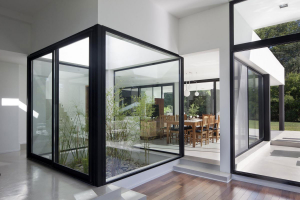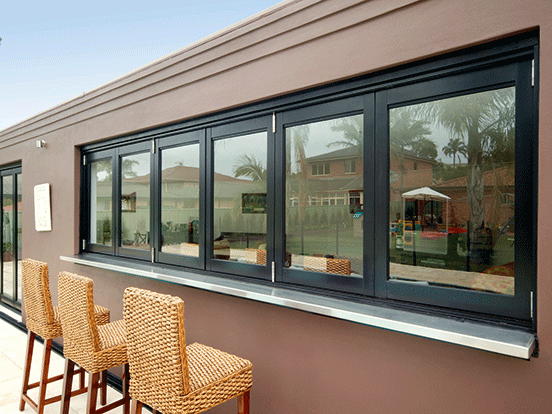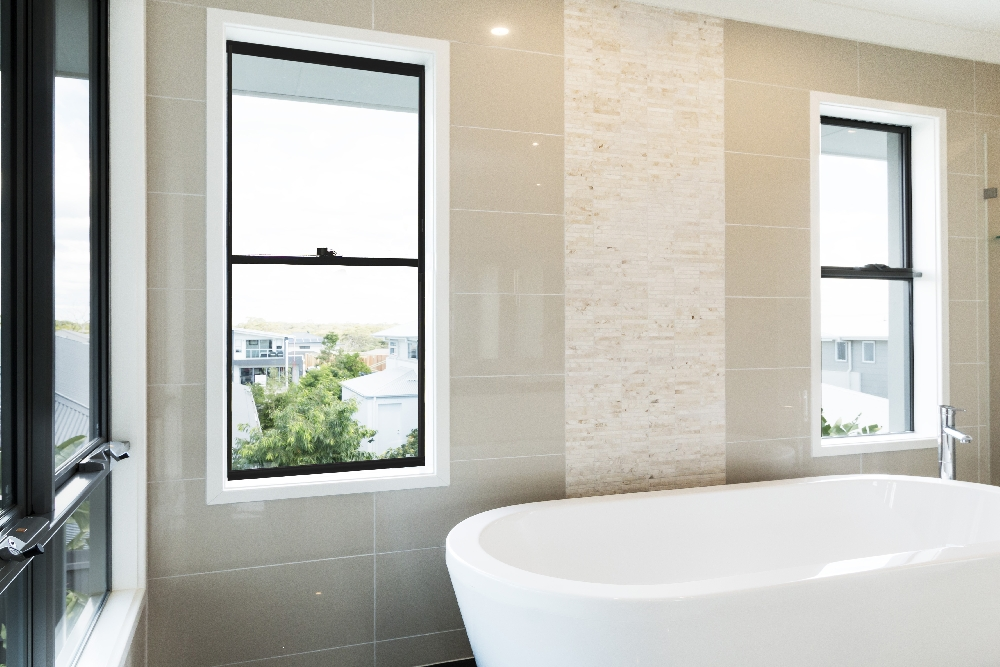When it comes to choosing the perfect doors for your home or business, two popular choices are stacker and sliding doors. Both offer unique benefits and drawbacks, making understanding their differences and advantages essential before deciding.
Understanding Stacker and Sliding Doors
Stacker doors, also known as stacking or bi-fold doors, consist of multiple panels that fold and stack against one another when opened. These doors are often chosen for their ability to create wide openings and seamlessly connect indoor and outdoor spaces.
On the other hand, sliding doors are a classic and popular choice for residential and commercial spaces. They consist of two or more large glass panels that slide to the sides along tracks.
PROS:
Stacker Doors
- Maximised Opening Width: They can span a substantial width, allowing you to enjoy unobstructed views and a seamless transition between indoor and outdoor areas. This feature is perfect for homes with beautiful gardens, patios, or scenic views.
- Flexible Configuration: You can choose to open a single panel for a smaller entrance or fold all panels to create a wide-open space. This adaptability is ideal for tailoring the doors to different weather conditions and occasions.
- Natural Light and Ventilation: They are a fantastic choice for rooms that need more daylight or airflow, such as living rooms, kitchens, or dining areas.
- Energy Efficiency: When closed, stacker doors provide excellent insulation, helping to maintain a consistent indoor temperature. This can lead to energy savings by reducing the need for heating or cooling, ultimately lowering your energy bills.
- Aesthetic Appeal: Stacker doors have a modern and stylish appearance that can enhance the overall aesthetics of your home or business. They come in various materials, finishes, and colours, allowing you to choose a design that complements your architectural style.
Sliding Doors
- Space-Efficient: Sliding doors don’t require extra space for folding or stacking, making them ideal for smaller rooms or areas with limited space.
- Ease of Use: They glide smoothly on tracks, making them suitable for all ages. This simplicity also means fewer moving parts, reducing the likelihood of mechanical issues.
- Cost-Effective: If you’re looking for an economical option that still offers a vast glass expanse, sliding doors are the right choice.
- Security: Sliding doors have robust locking mechanisms, such as multi-point locks and impact-resistant glass.
CONS:
Stacker Doors
- Space Requirement: Stacker doors need space to fold and stack to ensure you have enough room for the door panels to open fully without obstruction.
- Cost: Stacker doors can be more expensive than traditional doors due to their complex mechanism and customisation options. However, the investment can be worthwhile for the added functionality and aesthetics.
- Maintenance: Stacker doors have multiple panels and tracks, possibly requiring more maintenance than straightforward door types. Regular cleaning and lubrication of the tracks are essential to ensure smooth operation.
Sliding Doors
- Limited Opening Width: The most significant drawback of sliding doors is their narrow opening width. They are constrained by the size of the door panels.
- Reduced Natural Light: Sliding doors typically have thicker frames, obstructing some natural light.
Choosing Between Stacker and Sliding Doors
Ultimately, the decision between stacker doors and sliding doors depends on your specific needs, preferences, and space constraints.
- Space Availability: Assess the available space in the area where you intend to install the doors. Stacker doors may be the better option if you have ample space and want to create wide openings. For smaller spaces, sliding doors are more space-efficient.
- Aesthetic Preferences: Consider your aesthetic preferences and the architectural style of your home or business. Stacker doors offer a modern and elegant look, while sliding doors provide a classic and timeless appearance.
- Budget: Determine your budget for the project. Stacker doors are more expensive, so weigh the additional features and aesthetics against your budget constraints.
- Functionality: Think about how you plan to use the doors. Stacker doors may be the preferred choice if you require maximum natural light, ventilation, and a seamless indoor-outdoor connection. Sliding doors are better suited for rooms where space is limited and a simple, practical solution is needed.
- Security: Assess your security needs. Both stacker and sliding doors can be made secure, but you may need to invest in additional security features for either option.
- Maintenance: Consider your willingness to perform regular maintenance. Stacker doors may require more upkeep due to their multiple panels and tracks.
There is no one-size-fits-all answer in the debate between stacker doors and sliding doors. The choice depends on your unique requirements and preferences.
To make an informed decision, carefully assess your needs and priorities. Consult a professional to help you choose the right door type and consider your space’s overall design and functionality.
Contact Aussie Aluminium Enterprise today, and you’ll be glad you did!





